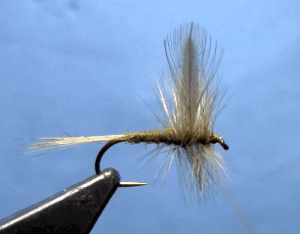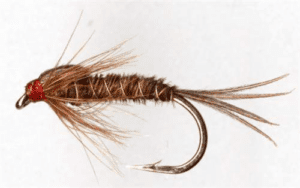Articles
Top 3 trout flies: Start tying these now for fly fishing in spring
Top 3 trout flies: Start tying these now for fly fishing in spring
By John Hayes
Pittsburgh Post-Gazette
In the weeks following Christmas, the great migration occurs. Northeastern fly anglers are drawn to their tying tables. Materials are inventoried, tools come out of the drawer and by Super Bowl Sunday, they’re focused on feathers and fur.
Fly fishing was first documented by the ancient Mesopotamians, and patterns invented in the 1600s to catch trout in the mountains of Penn’s Woods still work today. So many flies, so little time. If you could tie just three patterns to make it through spring, what would they be?
“Spring, of course, is the ideal time for trout fishing primarily because that’s when a lot of the bugs come out,” said Bob Phillips, a longtime tyer and owner of International Angler in Robinson. “Just three flies? I guess the first would be a Blue Winged Olive.”
Blue-Winged Olive
- Hook: 12-24 standard dry fly hook
- Thread: Olive tying thread
- Wings: Medium gray hackle tips
- Tail: Medium grey hackle
- Body: Olive rabbit dubbing
- Hackle: Medium grey rooster hackle
 Like most of the best flies, BWO doesn’t attempt to replicate a single bug. In color, size and profile it suggests a mayfly.
Like most of the best flies, BWO doesn’t attempt to replicate a single bug. In color, size and profile it suggests a mayfly.
“It’s the most prominent mayfly in fly fishing. You’ll find them throughout the country,” said Mr. Phillips. “They hatch for a longer period of the year starting in February. Trout love them.”
It’s smart to carry several sizes of each fly in the fly box. He recommends hooks Nos. 16-22.
“I think the most popular BWO is the parachute style. The little white post makes it more visible and it rides low in the water, imitating a dunn or emerger.”
Mr. Phillips said it will be important in spring to carry Grannom caddis patterns in sizes 14-16.
“Best to fish it under the surface like a soft-hackle pupa. The Grannom is a fast-emerging fly and trout gobble them up just under the surface.”
Don’t forget the Sulphur mayfly, which starts to hatch in May. It suggests two mayflies, one that grows to sizes 14-16 and a smaller one that grows to a hooks Nos. 16-18.
“You’ll see them on the water on a May afternoon and as the hatch progresses later into the evening.
The common Pheasant Tail is the go-to fly for Sam Presutti, fly fishing manager at the Orvis at Galleria Mall in Mt. Lebanon.
 Pheasant Tail nymph
Pheasant Tail nymph
- Hook: TMC 100SP-Bl #14-20
- Thread: 8/0 Rusty Brown
- Rib: Fine Copper Wire
- Tail, abdomen, wingcase, legs: natural pheasant tail fibers
- Thorax: Peacock herl
“It’s super, super simplistic. I go through a lot of them. They literally catch fish in nearly every body of water,” he said. “It’s an old fly. It’s dull and boring, but it imitates a mayfly very well.”
When spring waters get high, Mr. Presutti pulls out a Wooly Bugger.
Woolly Bugger
- Hook: Daiichi 2220 #1-14
- Thread: Black 3/0 Monocord
- Weight: Lead wire
- Tail: Black Marabou
- Rib: Brassie sized copper wire
- Body: Medium olive chenille
- Hackle: Black rooster saddle
 “In so many ways — dead drift under an indicator, strip it in, swing it — there’s no wrong way to fish it,” he said. “I like to have lots in a couple different colors: In darker high water, black. If the water’s clear or low, white or olive.”
“In so many ways — dead drift under an indicator, strip it in, swing it — there’s no wrong way to fish it,” he said. “I like to have lots in a couple different colors: In darker high water, black. If the water’s clear or low, white or olive.”
If he could choose only three flies, Mr. Presutti said one would have to be an Elk Hair Caddis.
“It’s a great fly. It floats very well — the elk hair is hollow — and it rides high on the water,” he said.
“It’s stable enough to hold up a nymph dropper without sinking. It can imitate a couple of things depending on what size you use [Nos. 14-16] and it’s a good prospecting pattern for when you’re not seeing fish.”
Mr. Phillips and Mr. Presutti agree that January is a great time to be on the water in Pennsylvania, where fishing is legal year-round on the limestone waters around State College and on stretches managed for Delayed Harvest Artificial Lures Only.
 John Hayes: [email protected]
John Hayes: [email protected]
